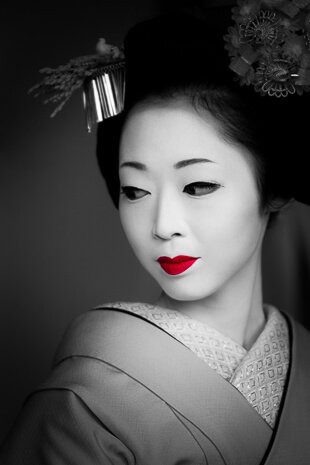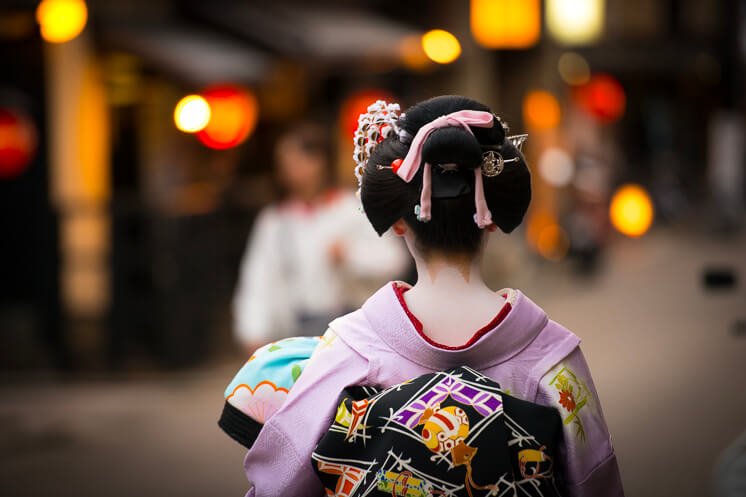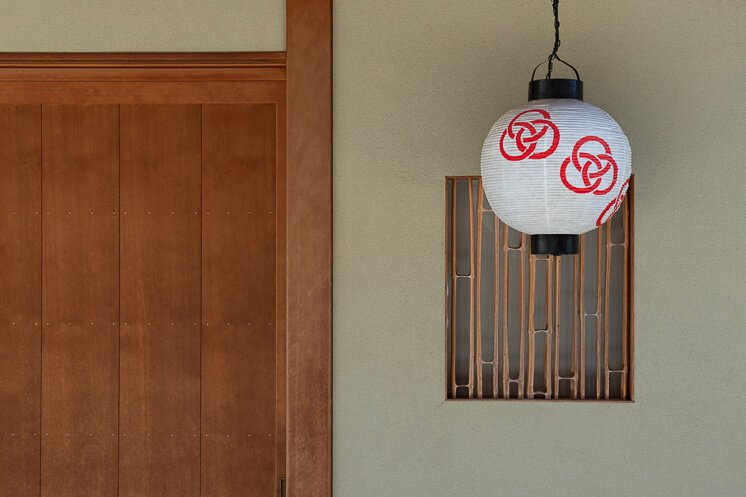When we think of Japan, we often envision cherry blossoms, ancient temples, and the enigmatic figures known as geisha. These individuals have played a significant role in traditional Japanese culture, and this guide aims to shed light on their history and importance. By providing an overview, we’ll set the stage for a deeper exploration into the world of geisha.
At its core, a geisha is a skilled and culturally significant entertainer in traditional Japanese society. Geisha are highly trained artists who excel in various performing arts such as dance, music, and conversation. Contrary to some misconceptions, geisha are not courtesans but rather cultural preservers who embody the essence of Japanese tradition.
If you’re seeking general insights about geisha and their role, this article is here to answer those queries. Yet, if you’re aiming for a deeper grasp of geisha culture and the broader realm of traditional Japanese culture, consider this article as a starting point. It will guide you toward more in-depth articles, each delving into specific aspects of the geisha world. Within each section, you’ll find links to explore further. Additionally, a comprehensive list of related articles can be found at the end of this piece, aiding your exploration of all things geisha.

To grasp the essence of geisha culture today, we need to venture into the past. The roots of geisha can be found in the urban centers of Japan during the Edo period (1603-1868). Emerging as entertainers, they wove themselves into the fabric of cultural history, blending artistic expression with grace.
Geisha are not merely performers; they are stewards of Japan’s cultural heritage. Their skills extend beyond entertaining, encompassing dance, music, and poetry. These arts captivate audiences and reflect a deep connection to Japan’s history. Geisha embody the core of Japanese culture, where every gesture tells a story.

The term ‘geisha’ (芸者) literally means “person of the arts”, but its significance goes beyond its literal translation. It encapsulates the core identity of a geisha—an individual who embodies artistic mastery.
A geisha’s role extends far beyond that of an entertainer. Originating in the Edo period, they captured the hearts of the urban elite, offering a blend of performance, charm, and cultural finesse. They are the cultural custodians, entrusted with preserving Japan’s rich heritage through their artistry. As skilled artists, they master various traditional arts like dance, music, and the intricacies of tea ceremonies. Their performances are not mere spectacles; they are an expression of centuries-old traditions that continue to thrive.
Geisha have often been shrouded in misconceptions, especially in Western culture. The allure of mystery has sometimes given way to misunderstandings. Let’s shed light on these misconceptions and replace myths with truths:
Misconception 1: Geisha as Courtesans
Contrary to popular belief, geisha are not courtesans. The historical roles of courtesans and geisha differ significantly. Geisha’s artistic skills are their primary offering, while courtesans held more intimate roles in society. This distinction is further evident by the coexistence of the geisha profession alongside the oiran profession, with oiran referring to courtesans, and the original existence of geisha as a male occupation.
Misconception 2: Geisha as Escorts
Another misconception is that geisha are akin to escorts. In reality, geisha entertain through performances, conversations, and traditional arts. Their presence enriches social gatherings, but their role is not romantic or intimate.
Misconception 3: Geisha’s Bound Role
Geisha are not bound to a life of servitude or subservience. They pursue their careers by choice and dedication. While they uphold traditional etiquette, they are independent individuals who contribute to society as skilled artists.
Aspiring geisha demonstrate their commitment through rigorous training. This training has evolved over time, transitioning from historical to modern approaches, to shape their expertise. The age of initiation has shifted, moving from the teenage years in the past to a slightly later start in contemporary times. Typically spanning several years, the training focuses on refining skills in traditional arts, cultural nuances, and the core essence of being a geisha.
Geisha training is not just about acquiring skills; it’s about embodying a way of life. The training process is intensive and comprehensive, encompassing a wide range of traditional arts and cultural practices. It’s a process that demands not only skill acquisition but also an understanding of the cultural nuances that define the role of a geisha.
Geisha-in-training undergo comprehensive instruction in various traditional arts. Dance, music, singing, and even conversation techniques are meticulously taught. Their goal? To become consummate entertainers capable of transporting their audiences to another time and place through their performances.
1. Dance: Geisha learn various forms of traditional Japanese dance, each with its own unique movements and symbolic gestures. The dances often tell stories from Japanese folklore, history, or literature, allowing geisha to express narratives through their graceful movements.
2. Music: Proficiency in playing traditional Japanese musical instruments like the shamisen, a three-stringed instrument, is a hallmark of geisha training. Music plays a pivotal role in geisha performances, setting the mood and enhancing the overall experience.
3. Conversation: Geisha are not just performers; they are skilled conversationalists. They learn how to engage guests in meaningful discussions, employing wit, charm, and intelligence to create an atmosphere of genuine connection and enjoyment.
Geisha-in-training dedicate themselves to daily practice and relentless refinement. The training is immersive, often involving long hours of practice to achieve mastery. The commitment to their craft extends to an exploration of cultural nuances, ensuring they embrace the essence of being a geisha. This enduring pursuit of excellence prepares them to captivate audiences, embodying the spirit of geisha through their performances.
The training path is not solely about skill acquisition; it’s about instilling the geisha’s essence into every movement, conversation, and gesture. The result is a transformation that embodies the rich cultural heritage of geisha, resonating through each of their captivating performances.
Within the geisha career, two distinct stages emerge: maiko and geiko. Maiko, the young apprentices, wear elaborate kimonos and vibrant accessories that easily distinguish them. They immerse themselves in learning traditions while charming guests with their youthful enthusiasm. As time passes, they transform into geiko, the seasoned geisha who have honed their craft to perfection, radiating elegance and refinement.
The concept of maiko and geiko represents more than a simple hierarchical progression; it encapsulates the transformative journey undertaken by geisha. Maiko invest years in training, embracing vivid colors and youthful energy in their attire. Progressing to the status of geiko, they adopt more sophisticated and subdued clothing, symbolizing their mastery of the art and their transition into a realm of grace and poise.
If you’re keen to delve deeper into understanding Maiko and Geiko and the distinctions between them, have a look our article The World of Maiko & Geiko: Geisha in Kyōto. And for those curious about discerning Maiko from Geiko in photos or during street encounters, our guide on the visual differences will equip you with all the knowledge you need: Maiko and Geiko: 10 Ways to Tell Them Apart.

When it comes to experiencing the enchantment of geisha culture, Kyōto takes center stage. This ancient city holds the key to unlocking the world of geisha, with its historic hanamachi districts (geisha quarters) serving as the backdrop for this captivating tradition. Hanamachi, which translates to “flower towns,” are cultural enclaves where geisha reside, train, and entertain.
Kyōto boasts five main hanamachi districts — Gion Kobu, Gion Higashi, Miyagawachō, Kamishichiken, and Pontocho — each with its own unique ambiance and history. These districts are not just geographical locations; they are living pieces of history, where the echoes of the past reverberate through the cobbled streets and wooden facades.
While the heart of geisha culture lies within these districts, modern-day encounters with geisha extend beyond the traditional confines. Visitors to Kyōto are often treated to glimpses of geisha gracefully gliding through the streets, en route to engagements or performances. It’s a testament to the enduring allure of geisha culture that even amidst the bustling cityscape, these figures manage to maintain an air of elegance and mystery.
1. Street Sightings: Catching a glimpse of a geisha in full regalia as she makes her way through the streets of Kyōto is a rare and enchanting experience. It’s a reminder that tradition and modernity can coexist harmoniously in this vibrant city.
2. Private Engagements: Private events offer a more intimate encounter with geisha. These gatherings allow guests to witness the artistry and grace of geisha up close, creating an atmosphere that feels like a portal to another time.
3. Festivals and Public Events: Festivals and public events provide platforms for geisha to showcase their talents to a wider audience. Traditional performances and cultural presentations allow locals and visitors alike to appreciate the beauty and significance of their art.
As we delve deeper into the enchanting world of geisha, it’s essential to explore the cultural districts that provide the backdrop for their world. These districts, known as hanamachi, are the beating heart of geisha culture — imbued with tradition, history, and a sense of mystique that draws both locals and visitors alike.

1. Okiya: The Geisha’s Home
At the core of each hanamachi are the okiya, the boarding houses where maiko reside under the guidance of a mother figure known as the “okāsan.” Okiya not only provide a place to live but serve as training grounds where young maiko learn the art of traditional performance, etiquette, and cultural practices.
2. Ochaya: The Teahouse Connection
Teahouses, or “ochaya,” are exclusive venues where geisha entertain guests through traditional arts such as music, dance, and conversation. These intimate gatherings offer a rare and expensive opportunity to witness geisha in their element, showcasing their refined skills while fostering an atmosphere of elegance and grace.
3. Theater Performances: A Spectacle of Artistry
The theater plays a vital role in the world of geisha, allowing them to showcase their artistic talents to a larger audience. These performances often include traditional dances, music, and storytelling, captivating spectators with the beauty and intricacy of Japanese culture.
4. Geisha and the Hanamachi Ecosystem
The hanamachi ecosystem extends beyond the geisha themselves, encompassing various roles that contribute to its vibrancy. From the artisans who create their exquisite kimono to the tea masters who uphold the ceremonial aspects of the culture, each piece comes together to form a rich mosaic of tradition and artistry.
Just like appreciating a complex work of art, the more we understand, the more we enjoy. Geisha culture is much more than what meets the eye – their elegant appearance and graceful movements are just the beginning. It’s a world of tradition, history, and detailed rituals that require a lifetime to master. The deeper we dive into it, the more we uncover a fascinating web of stories and customs that define the heart of Japanese tradition. Exploring further, we not only enjoy their performances but also connect with the rich heritage they carry. For those intrigued by geisha culture and wanting to know more, our list of related articles offers a way to delve even deeper into this captivating world:
Before we part ways, we invite you to experience the allure and enchantment of geisha culture through our exclusive photo collections. The pictures of our collections Moments of Beauty I and Moments of Beauty II were taken in Kyōto’s two most beautiful hanamachi – Gion and Miyagawa-chō.
Thank you for joining us on this introductory voyage into the captivating world of geisha. May your curiosity and appreciation for their culture flourish and inspire a deeper connection to the beauty that is geisha.
My series “Moments of Beauty I” captures timeless moments in Kyōto’s geisha quarters, known as hanamachi. I created this series during a year-long stay in a small, traditional house located between two of the most beautiful hanamachi in Kyōto. As I passed through these neighborhoods daily, I became enamored with the aesthetic of the traditional Kyōto townhouses, called kyō-machiya, and the daily life within the geisha quarters.
As I spent more time exploring the streets on foot and by bike, I began to regularly see geiko (the term used for geisha in Kyōto) and maiko (apprentice geiko) going about their daily activities. The sophisticated and elegant way in which they move and behave, almost gliding along the streets in full attire, captivated me. These moments were like watching a play unfold before my eyes, like a scene from another era taking place in the present. These short, spontaneous “plays” take place daily without an audience and without following a fixed schedule. If you happen to be in the right place at the right time, you have the opportunity to witness and enjoy them.
With my photography, I aimed to capture these “plays” by setting the stage with the beautiful kyō-machiya architecture in the background, and waiting for interesting moments to happen within the frame. I often waited for hours without any results, but it was all worth it when everything came together for that one moment of fleeting beauty, only to disappear again a few seconds later.
I created this series in black and white, to keep a balance between the houses and the maiko and geiko, without the colorful kimono overpowering the architecture in the background. This also gives the pictures a sense of timelessness. Most of the scenes I photographed happened the same way 300 years ago as they are happening today. To me, there is a special beauty in the idea of moments that are fleeting but get repeated for hundreds of years through lived tradition.
It is my hope that my series “Moments of Beauty I” will transport the viewer to the streets of Kyōto’s hanamachi and allow them to experience the same sense of wonder and appreciation that I felt while creating it.
My series “Hanamachi I – Moments of Beauty” captures timeless moments in Kyōto’s geisha quarters, known as hanamachi. I created this series during a year-long stay in a small, traditional house located between two of the most beautiful hanamachi in Kyōto. As I passed through these neighborhoods daily, I became enamored with the aesthetic of the traditional Kyōto townhouses, called kyō-machiya, and the daily life within the geisha quarters.
As I spent more time exploring the streets on foot and by bike, I began to regularly see geiko (the term used for geisha in Kyōto) and maiko (apprentice geiko) going about their daily activities. The sophisticated and elegant way in which they move and behave, almost gliding along the streets in full attire, captivated me. These moments were like watching a play unfold before my eyes, like a scene from another era taking place in the present. These short, spontaneous “plays” take place daily without an audience and without following a fixed schedule. If you happen to be in the right place at the right time, you have the opportunity to witness and enjoy them.
With my photography, I aimed to capture these “plays” by setting the stage with the beautiful kyō-machiya architecture in the background, and waiting for interesting moments to happen within the frame. I often waited for hours without any results, but it was all worth it when everything came together for that one moment of fleeting beauty, only to disappear again a few seconds later.
I created this series in black and white, to keep a balance between the houses and the maiko and geiko, without the colorful kimono overpowering the architecture in the background. This also gives the pictures a sense of timelessness. Most of the scenes I photographed happened the same way 300 years ago as they are happening today. To me, there is a special beauty in the idea of moments that are fleeting but get repeated for hundreds of years through lived tradition.
It is my hope that my series “Moments of Beauty I” will transport the viewer to the streets of Kyōto’s hanamachi and allow them to experience the same sense of wonder and appreciation that I felt while creating it.